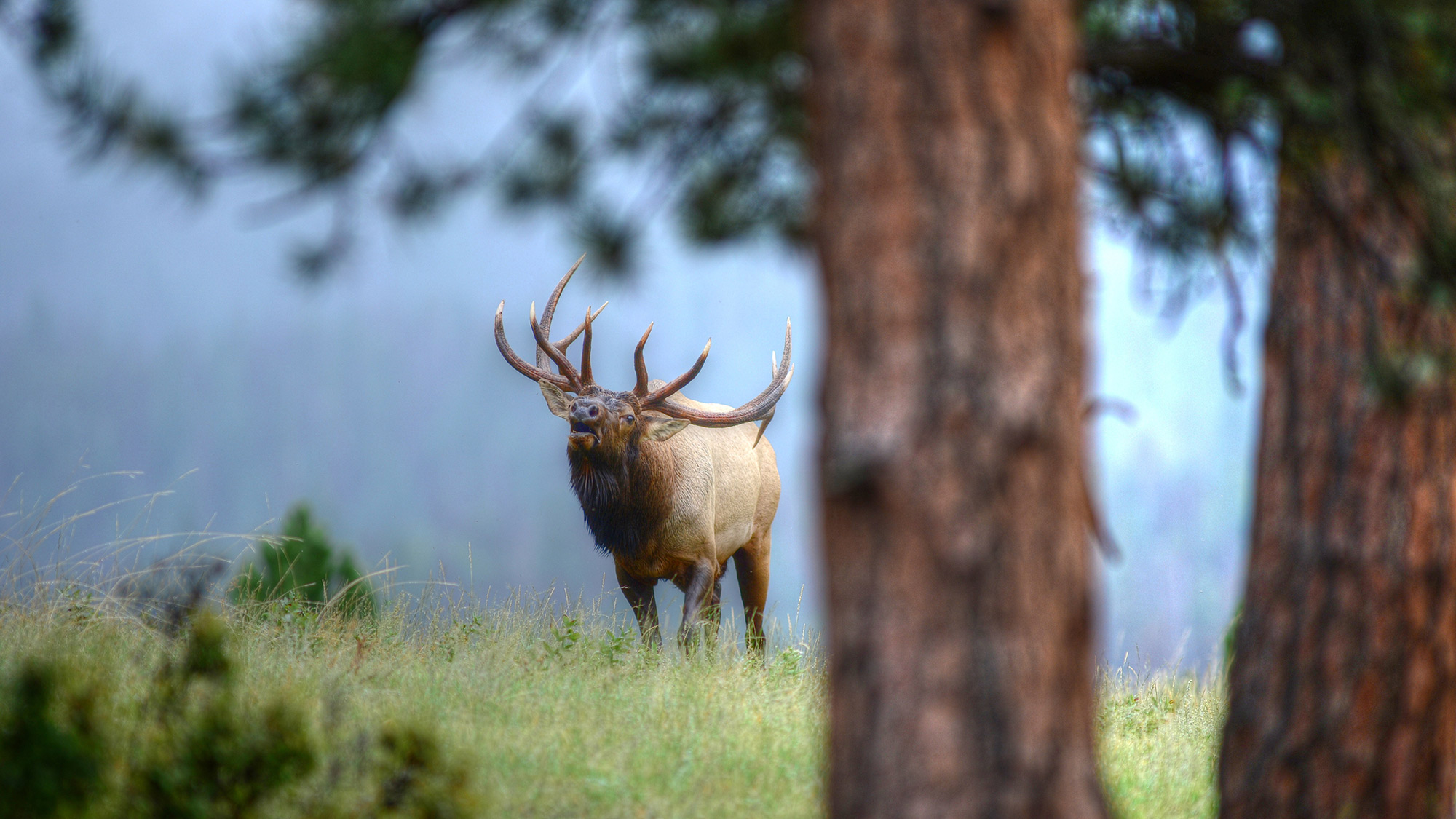IT HAD BEEN the most frustrating, and yet the most glorious, week of elk hunting imaginable. The particular section of southwestern Montana that I was hunting was simply crawling with elk. I was into bulls every day — sometimes several a day — and yet by the sixth day I hadn’t even drawn my bow.
Oh, a half-dozen smaller bulls had come in, and I could have taken one had I chosen to do so. But I was after a good bull, one of those elk with many winters — and many hunting seasons — under his belt. I had called up a handful of these big boys so far, but each time they wouldn’t quite come in close enough for a shot. They’d hang up in the brush 80 yards out and rake their antlers, or stop and peek around a pine tree, or circle the wagons and try to get my wind. There’d been lots of action and plenty of excitement, but no cigar…not yet.
That’s why I’d decided to try something radical. On this day I strapped a smallish five-point elk antler to my daypack and went to an area where I’d seen a heavily antlered 5×5 bull two days before. At dawn I was in position, champing at the bit for enough light to see my sight pins. When it was bright enough I bugled, and a bull responded instantly not 100 yards down the canyon. I aggressively closed the gap, and we began a verbal sparring match that obviously incensed the bull and sent the hackles on the back of my neck straight to attention.
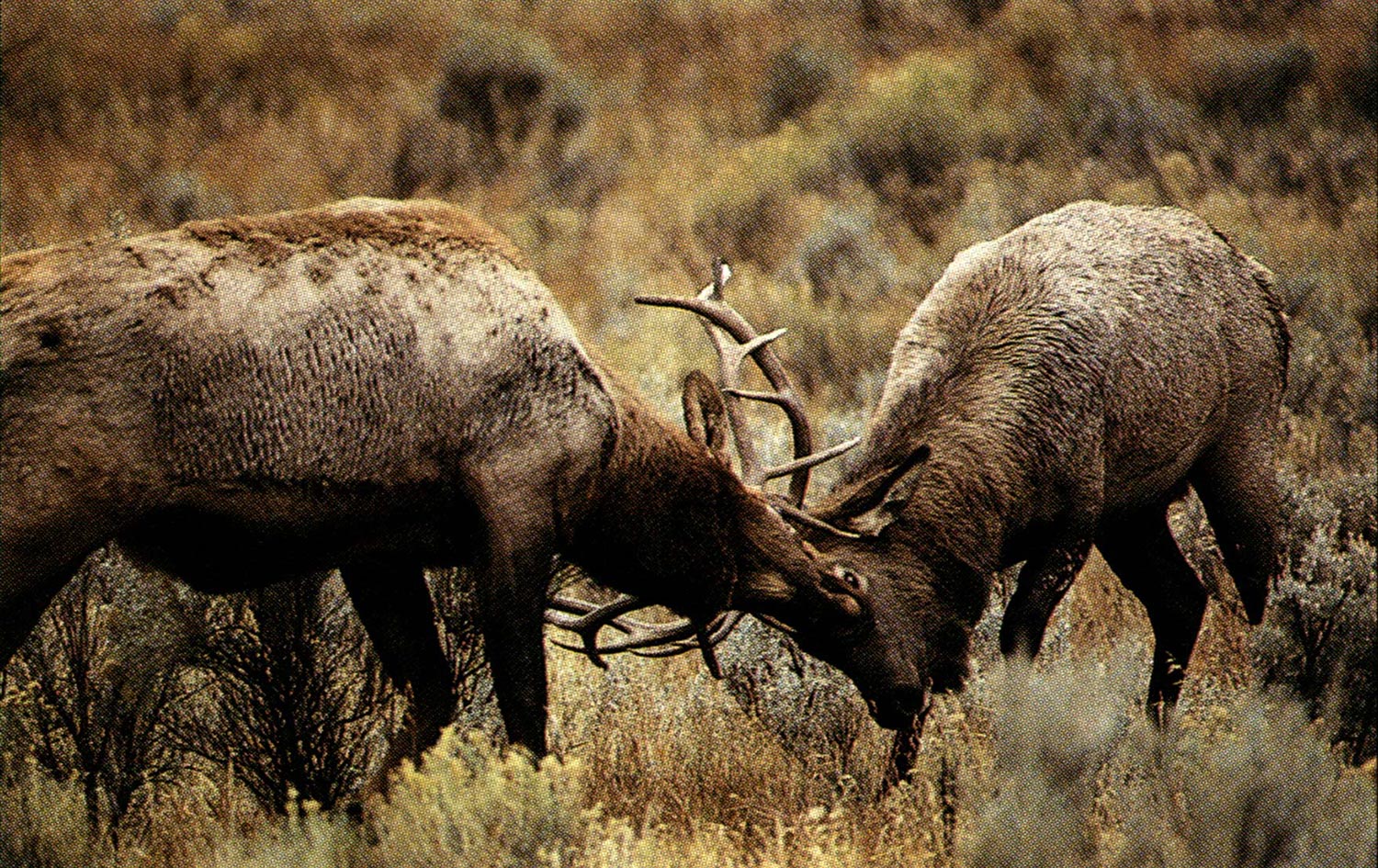
Thrashing and crashing, the bull came in, but like many of the others he hung up just out of range, up the opposite side of a small creek. I could see his antler tops above the brush as he raked and chuckled, showing off his muscle. It was the same big 5×5 I’d seen previously.
Taking my little five-point antler, I poked it above the brush pile I was set up next to, bellowed on my bugle and pawed the ground with my boot. All the while I twisted and turned the antler in a shadow-like imitation of the big bull. I saw my “rival” raise his head, and when he saw the antler above the brush he was sold. He came rumbling down the creek bank like an antlered tank. As the bull plowed into the bottom, I dropped my antler and readied the bow. He then charged up the other side and paused, looking for the pipsqueak five-point that had been there just a minute before. My arrow centered the bull’s lungs, and 30 minutes later I was giggling with glee.
If the elk won’t play by the rules, then why should I?
TODAY’S BULL ELK are smartening up. Mature bulls — those who have lived through more than four or five hunting seasons — have seen all of the tricks. They’ve heard bugling good and bad, smelled the woodsmoke of camps large and small, seen the annual invasion of their mountain homes by hunters dressed in everything from total camouflage to pumpkin orange. They’ve been stalked, driven, chased, bushwhacked and run around the mountain more than enough times to ever forget. They’ve done more than read the textbooks on elk hunting — they’ve written the chapters themselves.
That’s why today you need to be ready to give elk something they’ve never seen before. Not that textbook maneuvers won’t work. Of course they will. But nothing works all of the time; and when the textbook comes up with an answer of “five” to the question “two plus two,” you know it’s time to throw away the book and try something radical.
Merritt Pride, who runs Lost Fork Ranch out of Cameron, Montana, is a longtime guide and outfitter and one fine elk hunter. He also isn’t afraid to try something different to get a bull within range.
“One time I bugled a nice bull in for a bowhunting client who had a fancy bow with an overdraw and all that,” Pride recalled. “When the client went to draw, the arrow fell off the rest — clank! — and the bull trotted off. The other bulls had been acting funny that week, so instead of cow calling or bugling, I gave the alarm bark of a cow elk. Everyone says that when a bull hears this, he’s gone. But this bull came right back in.
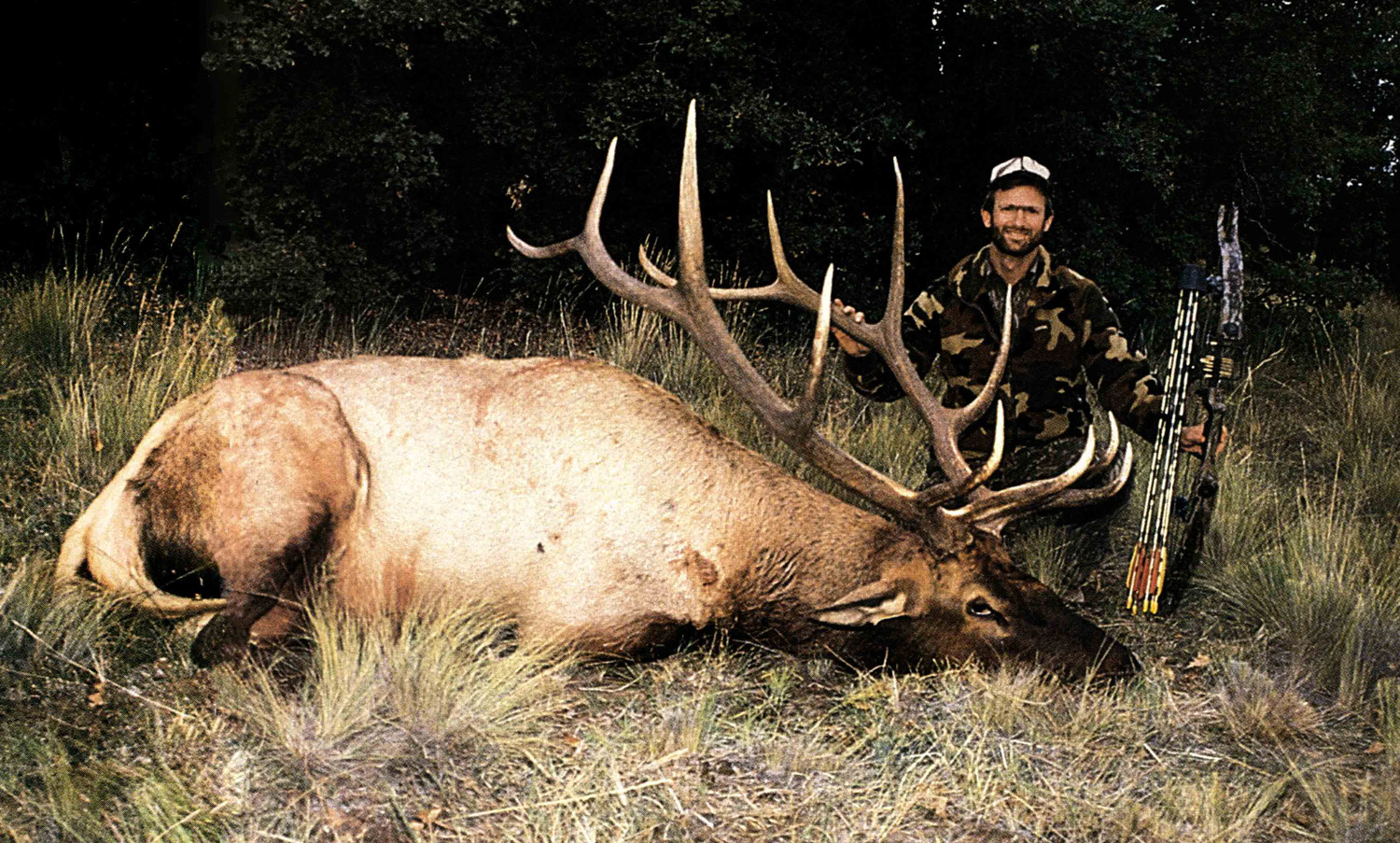
“The hunter was so amazed that he let the arrow fall right off the rest again — clank! — and the bull bolted off a second time. I couldn’t believe it! But I barked one more time, and the bull stopped and came back — a little more cautiously this time, but he did come back. My hunter finally got it together and made the shot.”
Then there was the time Pride and I were hunting as a team. We had gotten a good bull going in a spot so brushy that you could barely see your hand in front of your face. The bull had a small harem of cows with him, and the group was above us on the side of a small timbered ridge across a creek cut. As the crow flies, the elk were 75 yards off. As the hunter walks, they were 200 yards away.
The bull strutted back and forth across the face of that ridge, bellowing and ripping up brush. As he moved, we moved, staying parallel and not letting him get what he wanted — the wind. This went on for perhaps a half-hour, when finally we heard some rocks clatter. The bull had had enough, and he was going to take his cows over the ridge and away from this noisy madhouse. Pride and I both realized what was happening at the same instant, and when the guide looked at me with bug eyes and an expression that said, “Now what?” I whispered, “Let’s charge ’em!”
So I did. As Pride called and raked like a demon, I crashed through the brush as fast as I could right at the elk. I hoped the herd would think the noise was another bull that was lathered up and ready to do battle. When I came out of the thickest brush into a smallish clearing, there was the bull, not 40 yards off-and he was a dandy six-point. Stunned to find that the Charge of the Light Brigade had worked, I stumbled over a fallen log. That broke the spell, or I’m sure I would have had a good shot at that trophy.
It seems like elk want to see elk, or at least something with four feet that doesn’t resemble a hunter. If they can’t see another animal, they often get as cautious as a cat stalking a bird on your front lawn. Any little thing that gets them to believe that you are really another elk, and not some bozo straight from the coffee shop in town, is often enough to win the day.
Take horses, for example. I’ve had more than one bull bugle at the sound of my horses’ hoofs as we clompity-clomped down the trail. I can remember one rifle season in New Mexico when my partner and I were riding along through some rolling mountaintop meadow areas dotted by several islands of heavy timber. Coming around the corner of one such timber stand we ran smack dab into the middle of a herd of 30 elk, five of them nice five-point bulls. The textbook says to stop, slowly turn the horses around, ride into the timber, dismount and make a stalk on foot.
Not us. Instead we continued to ride right at the elk, who stood their ground trying to figure out just what in the world we were. When we got to within 150 yards, I turned my horse broadside, tossed the reins to my partner, who had moved his mount in between the elk and me, stepped off the saddle, sat down, and as the horses cleared my position, shot the largest bull in the bunch.
Textbook elk hunting? No way. Effective? You betcha.
AN ELK HUNTER’S worst enemy—after his own clumsiness—is the wind. Bow season, rifle season, muzzleloader season, it doesn’t matter-if you don’t have the wind in your favor, you don’t have a chance. How good is an elk’s sense of smell? Jack Atcheson Sr., the veteran booking agent from Butte, Montana, has shot more big bulls with his rifle on public land than just about any man alive. And Atcheson has a pretty strong respect for the elk’s nose.
“Elk have a sense of smell like few other animals you can hunt,” he said. “Let me give you an example. I spotted a band of elk feeding along in an open meadow a half-mile from where I was standing. All at once I felt the wind switch, going now from me right to them. The second that breeze—and it was a gentle breeze, not a strong wind—got my scent to those elk, they threw their heads back, noses in the air for just an instant, then bolted into the dark timber. At a half-mile! How many elk do you think smell most hunters during the season and skedaddle before the hunters ever even know they are in the neighborhood?”
Elk live in swirling-wind country. Many longtime elk hunters—myself included—believe that elk purposely bed down during the day in areas where the wind always swirls as a means of extra protection against attack from all sides. Textbook strategy says to stay out of these unstable wind areas so that you won’t spook elk out of the country with your evil odor.
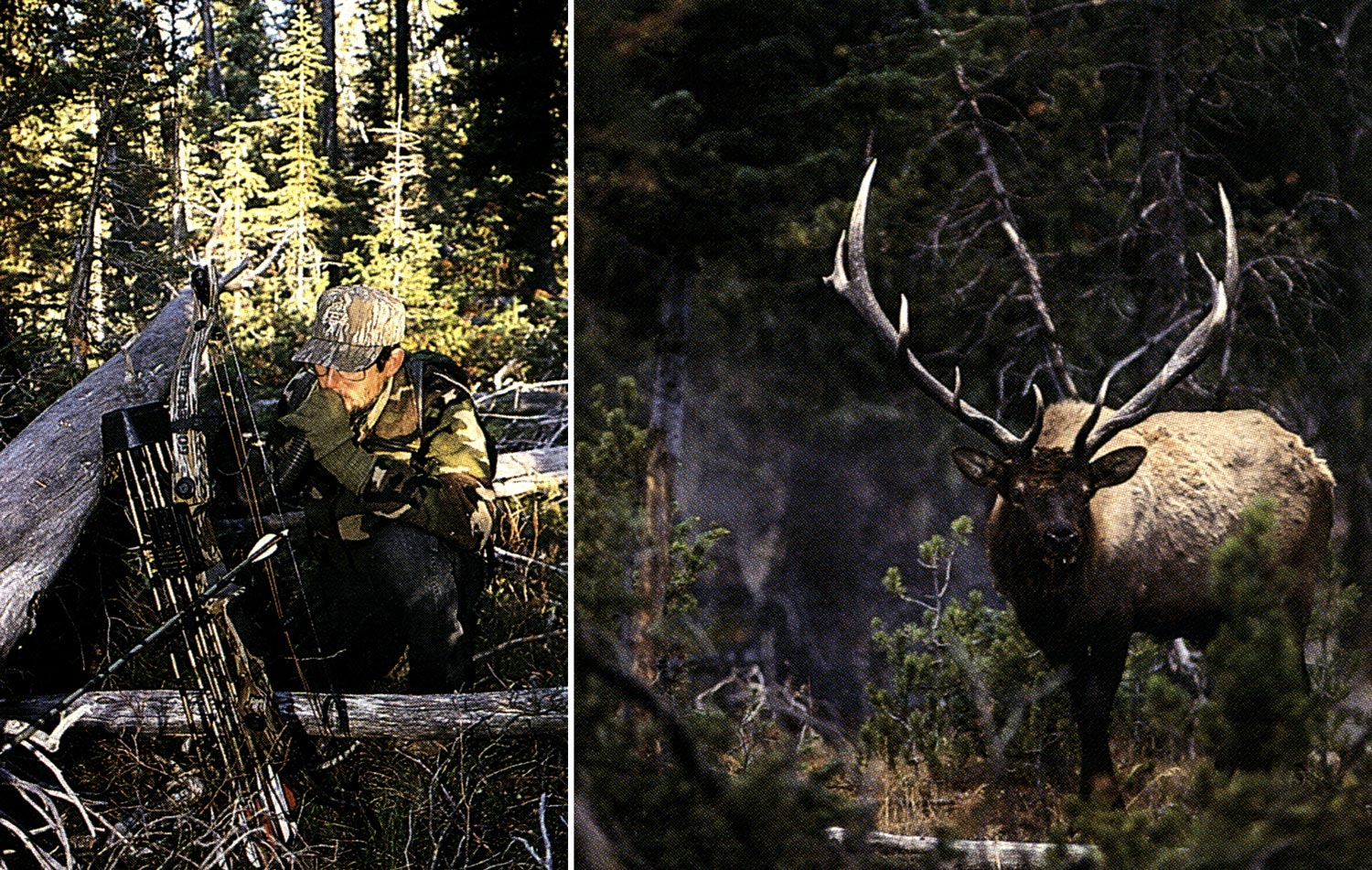
But when it’s hot, dry and the ground underfoot is as crunchy as a crumpled-up newspaper, the elk don’t move much during shooting light. If you want a bull, you have to go in after him. The way to avoid the swirling wind is to borrow a page from the whitetail hunter’s textbook and get above the breeze — in a tree stand.
In hot weather, elk like to live near water holes and/or wallows, which they use to help them stay cool and comfortable. Scout around and find a wallow or water hole that is peppered with fresh sign — usually tracks and droppings. Take a portable, backpackable tree stand and set it up nearby. Try to move in and place the stand when the breeze seems to be blowing steadily in your face, but once the stand is up, plan on spending the entire day there. Take lunch, an empty bottle for “emergencies,” and a good paperback book to help fight boredom, strap yourself in with a safety belt, and be patient.
Give the stand a couple or three days, if necessary. During that time you’ll be surprised at what you’ll see from your perch. On a recent hunt in Idaho’s Selway-Bitterroot Wilderness during the opening week of rifle season, a friend staked out a water hole under hot conditions for three days. He ended up seeing not only elk, but also mule deer, whitetail deer, a coyote, a lone black bear, a mountain lion, plus numerous raptors, songbirds and small game. In so doing, he shot the biggest bull of the hunt, an eye-popping 6×6.
ANOTHER TRICK borrowed from the whitetail hunter’s handbook that can be quite productive for elk is rattling.
Hunting in New Mexico in 1990 with U.S. Outfitters and my good friend Archie Nixon was when the rattling light bulb went on in my head. With a bow I had taken a huge bull that scored 345 Boone and Crockett Club points two days earlier, and I was now helping Nixon guide another of his clients. One morning we looked down off a hillside and spotted a very large 6×6 bull stalking a lone cow. Suddenly, another big 6×6 appeared, and it was obvious that we had ringside seats for what was going to happen next.
The bulls circled each other briefly, then locked horns in a for-real, someone’s-going-to-get-hurt battle over that cow. They spun in a big circle, clacking their antlers, pawing the ground, and making a ruckus that would frighten a dead man.
As if by magic, out of the brush popped the head of another nice bull. Then another. And another. And still one more. In a matter of minutes five nice bulls together with a couple of cows had come to the sound of those bulls battling. Why they came — whether it was curiosity, the breeding urge or whatever—who can say? But come they did.
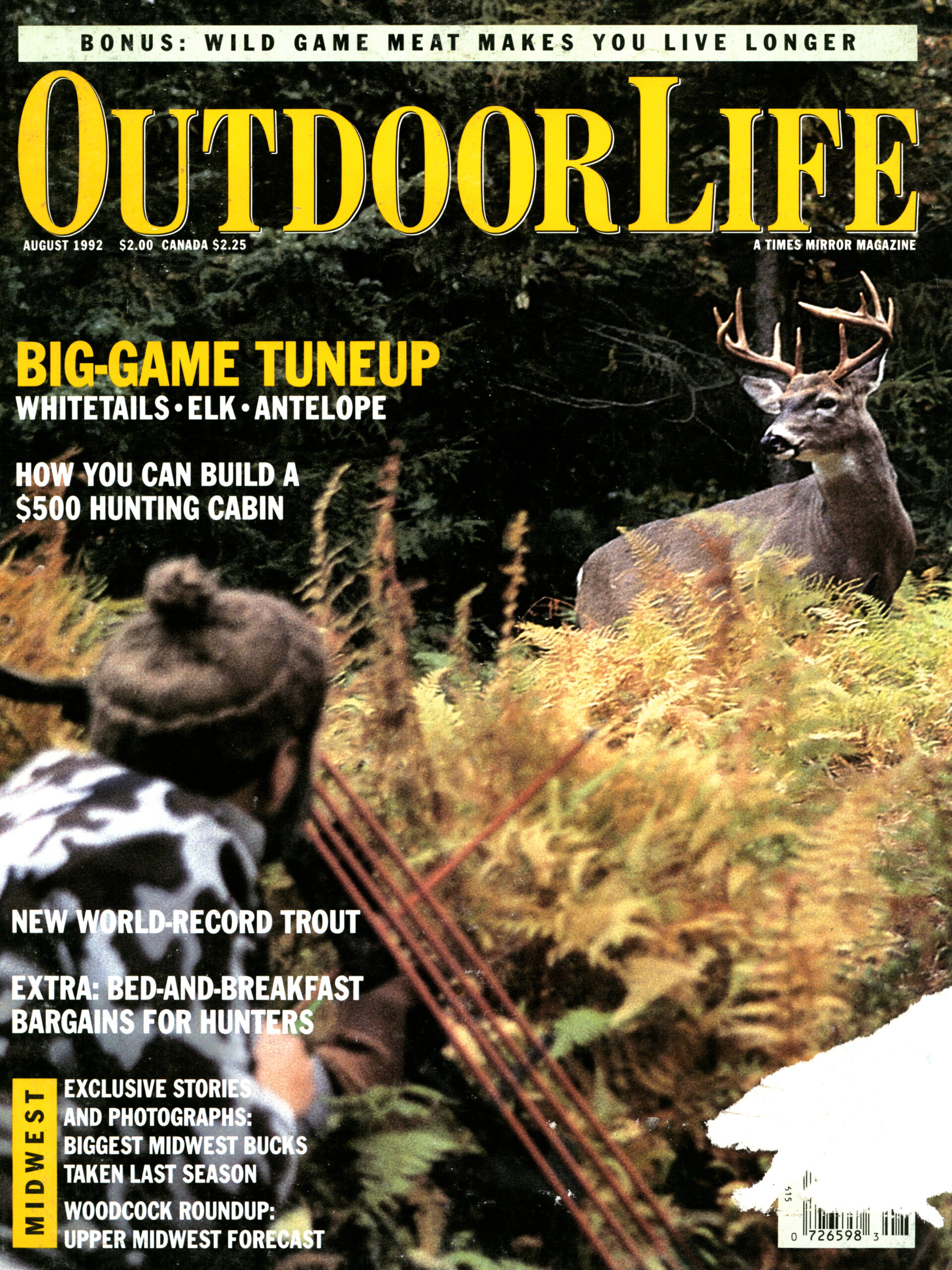
Elk hunters have often raked and banged trees with limbs cut from other trees in an attempt to mimic a bull raking his antlers. This is fine, except that the sound doesn’t carry very far in the dense timber or over uneven ground. The sound of rattling a pair of deer antlers together carries much better, is realistic, and it works. Not all of the time, of course, just like rattling for deer doesn’t work every time, but it’s one more trick to pull out of your bag when the hunting’s tough and the textbook answers don’t get the job done.
I’m not through experimenting with off-the-wall, radical elk strategies, either. For example, I have in mind for this fall a nice secluded little wallow on a small creek that’s not far from a logging road. If the elk sign is there the way it has been the past three years, during bow season I plan on setting up a tree stand nearby and placing a standing elk decoy in the wallow. Decoys have worked for me when I’m hunting whitetails, so why shouldn’t they work for elk? Of course, I’ll flag the decoy with some fluorescent orange ribbon for safety’s sake, and then I’ll spray a little commercial elk-in-heat scent around and bugle from my tree stand.
Read Next: The Best Elk Rifles, Tested and Reviewed
Will it work? Who knows? The one thing I do know is that if the elk won’t play by the rules, I’ll throw out the textbook and play the game any way they like. When it comes to hunting today’s well-educated bulls, it pays to get radical.
This story is republished as it originally appeared in the August 1992 issue under the title, “Break the Rules for Bulls.”
